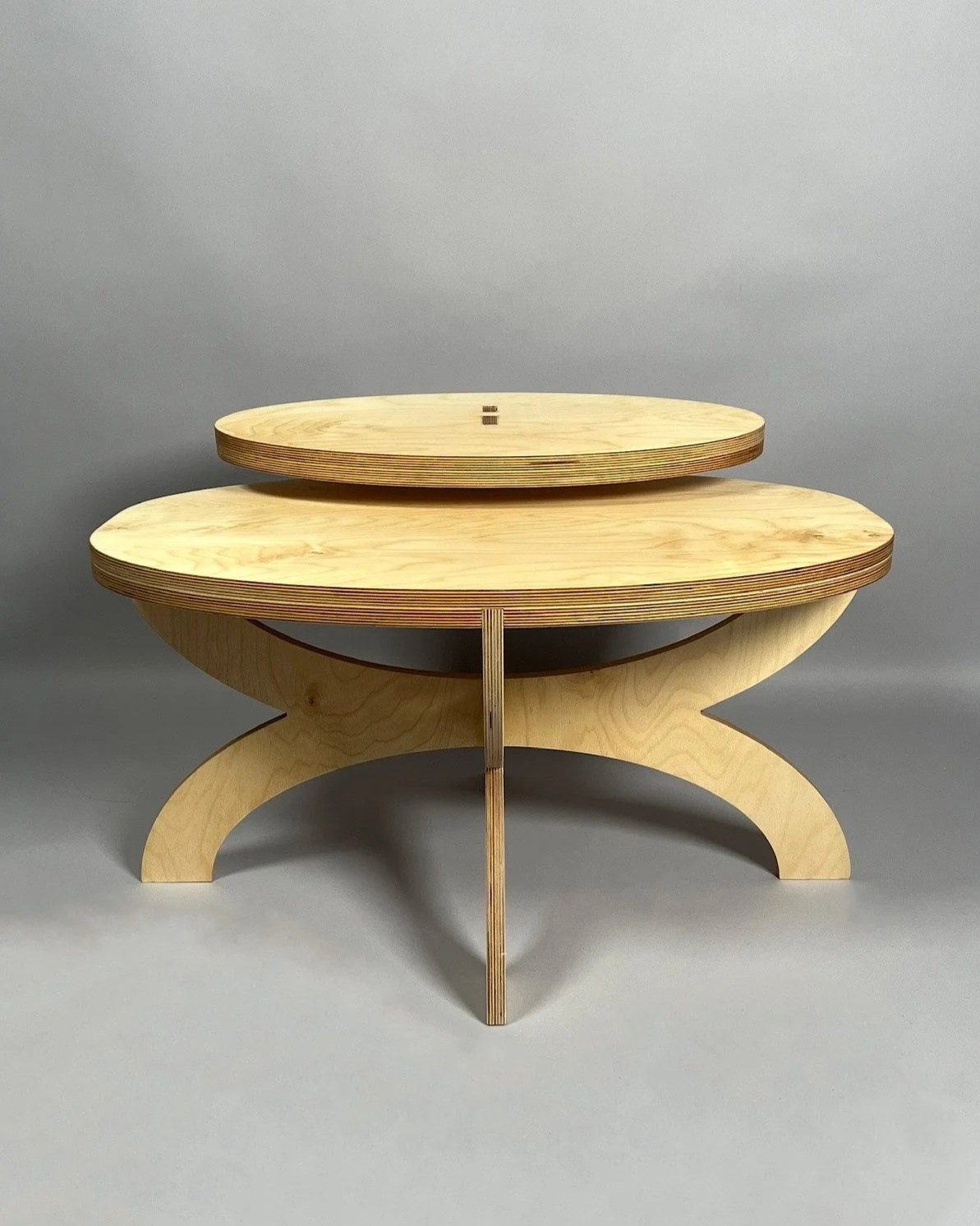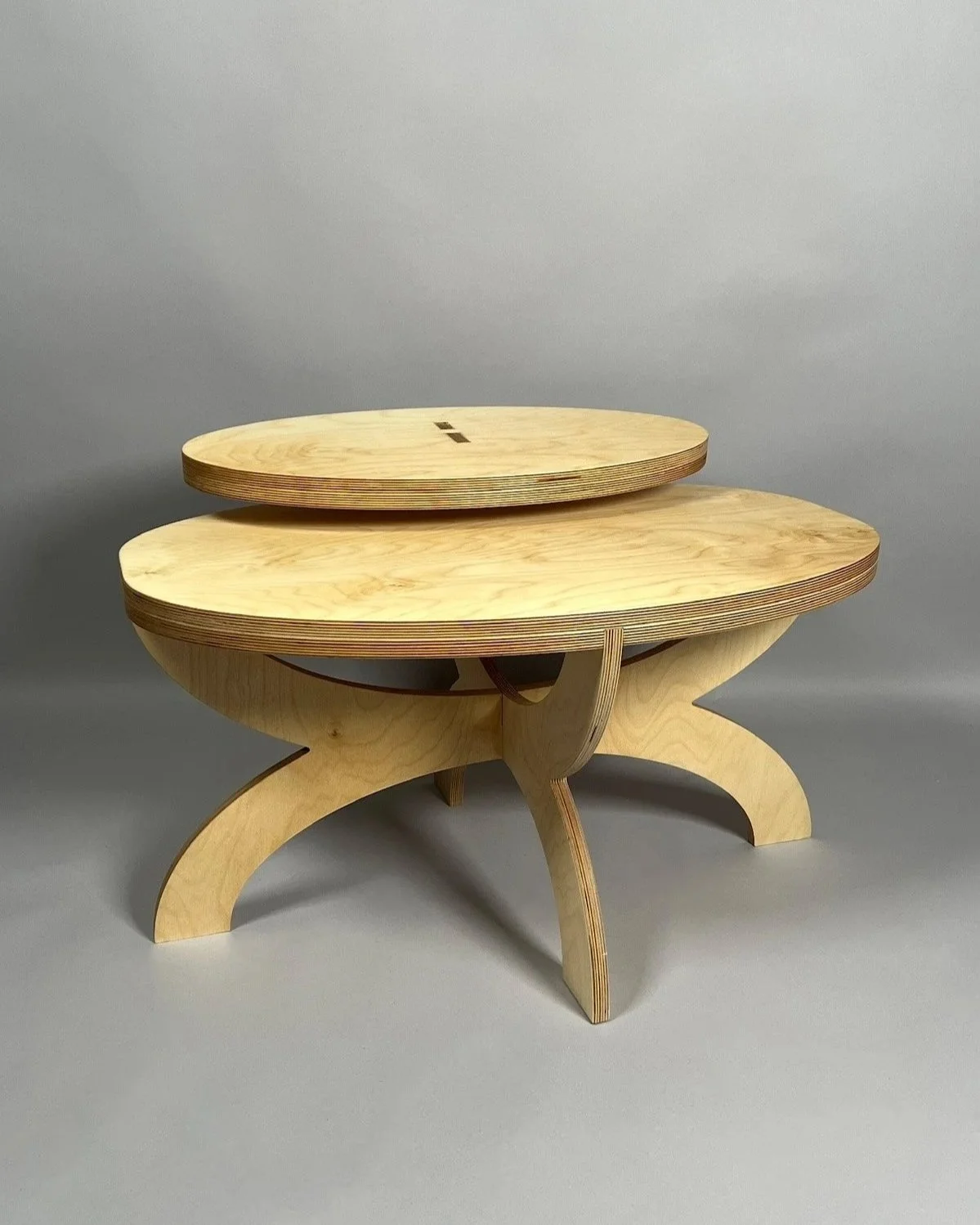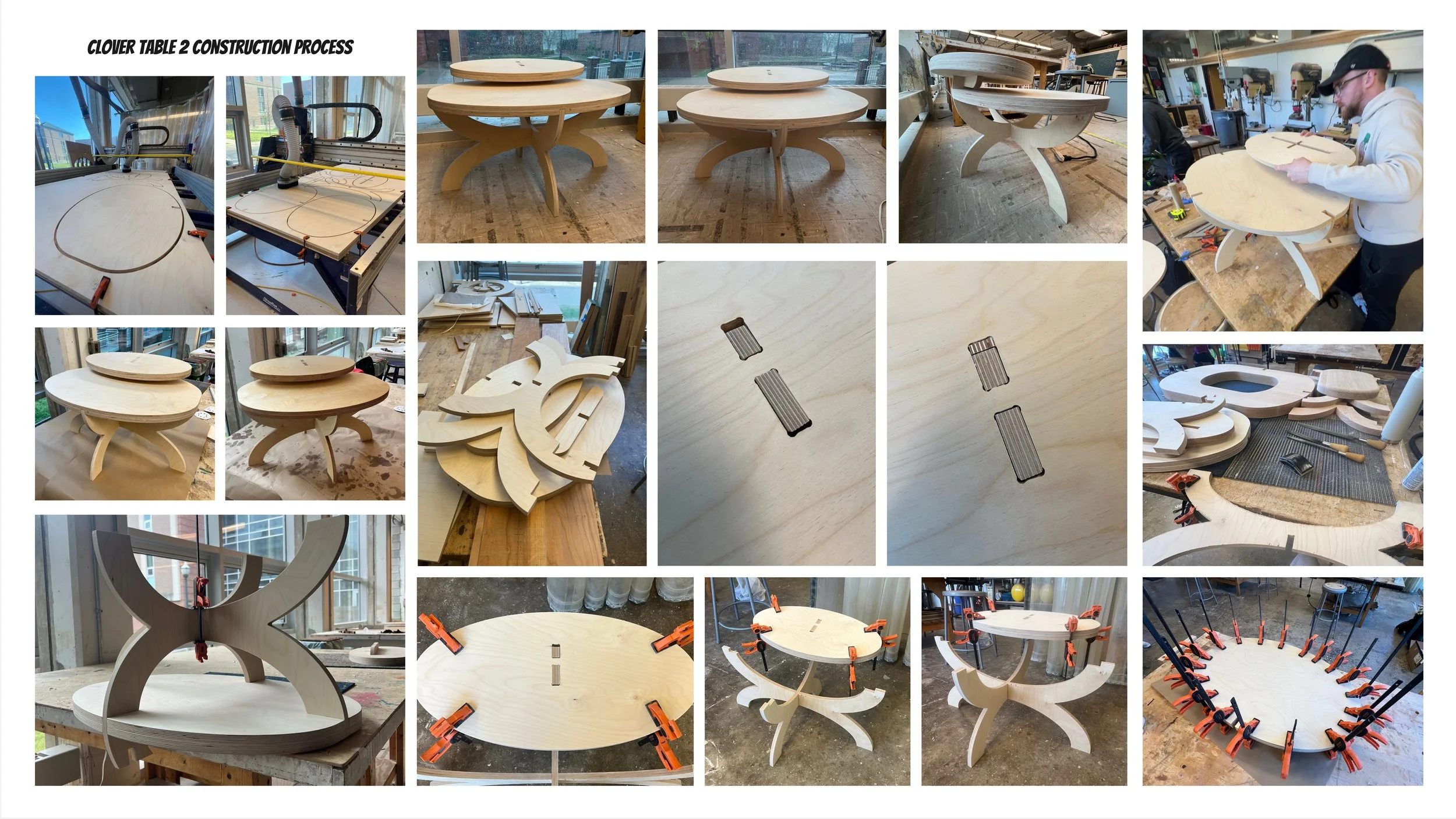Clover Table 2
Clover Table 2
Project Overview
This project expanded our exploration of non-verbal dialogue and collaboration with non-human agents into the physical creation of furniture. We were challenged to design a piece guided by the conceptual framework of Portable, Parceled, Packable—three principles that encouraged critical thinking around material selection, assembly methods, scale, and efficiency in packaging and transport.
Pattern and modularity served as secondary design strategies, driving us to create a system in which individual modules—each with its own distinct identity—could combine into a larger, cohesive whole. These principles shaped every stage of development, from early concept sketches to the final assembly, informing both the conceptual and functional aspects of the design.
concept Overview
Clover Table 2 was developed with an emphasis on curiosity, exploration, and long-term engagement. Guided by our team’s shared values, my goal was to design a piece that invites interaction and discovery through form and function.
Building on our original leg concept, I refined the proportions, reimagined the tabletop, and improved the joinery to create a more dynamic and approachable structure. Baltic birch was chosen for its strength, stability, and durability—qualities that align with the table’s emphasis on adaptability and play. Using wood as the primary material also allowed me to deepen my understanding of fabrication processes and the relationship between precision and craft.

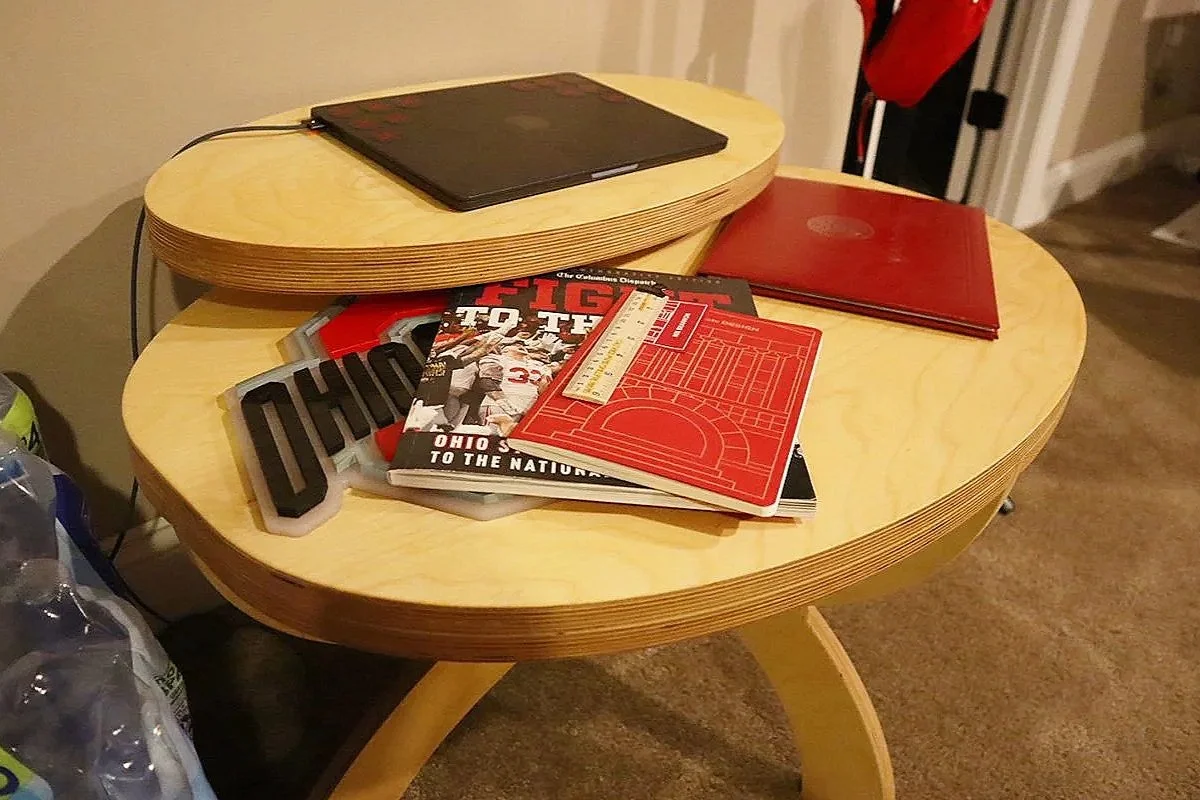

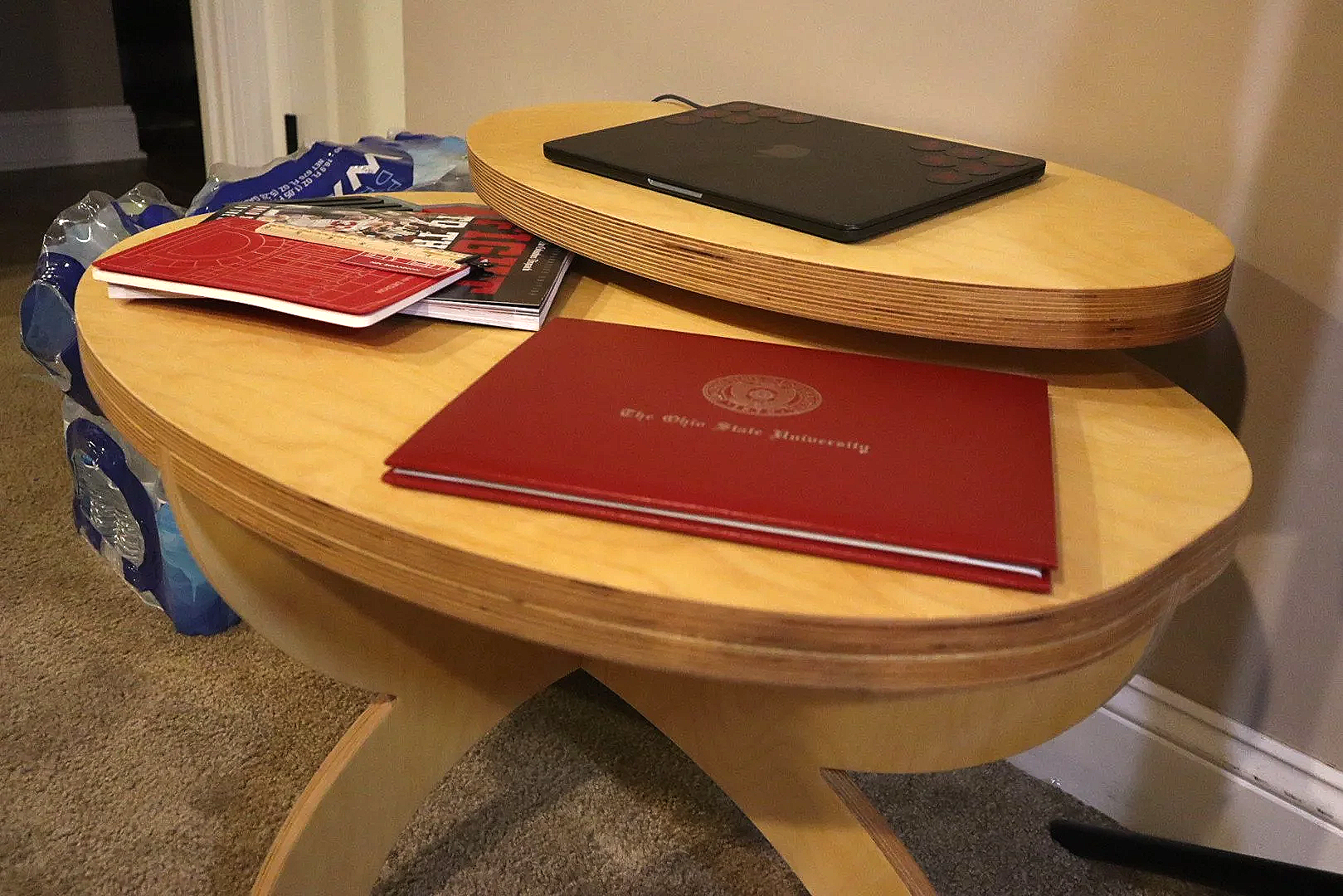
Sketches, models, & Process
I began by sketching out table ideas, which was challenging since visualizing three-dimensional forms isn’t my strongest skill. Still, I developed a few concepts I was excited to explore, which helped build my confidence moving forward. Using cardboard, I created 15–20 small models and Illustrator templates to refine structure and stability. I kept the clover-shaped leg design consistent while experimenting with tabletop angles and joinery to achieve a secure, functional fit.
The construction process spanned several weeks and marked my first real experience working in the woodshop. With the help of my group mate and best friend, I dedicated nearly every day to learning and refining each step. Using the finalized model file, we cut the pieces on the CNC machine, then spent hours sanding, gluing, and assembling the structure. The process was both demanding and rewarding, culminating in a carefully stained and finished table that reflected our growth and collaboration.
Reflection
This project gave me a deeper understanding of working with physical materials and exploring design beyond digital spaces. I enjoyed designing with purpose, creating a table that interacts with a family and fits within a larger system. Revisiting the woodshop after nearly a decade was both challenging and rewarding, and I gained valuable hands-on experience that strengthened my understanding of fabrication and craft.
